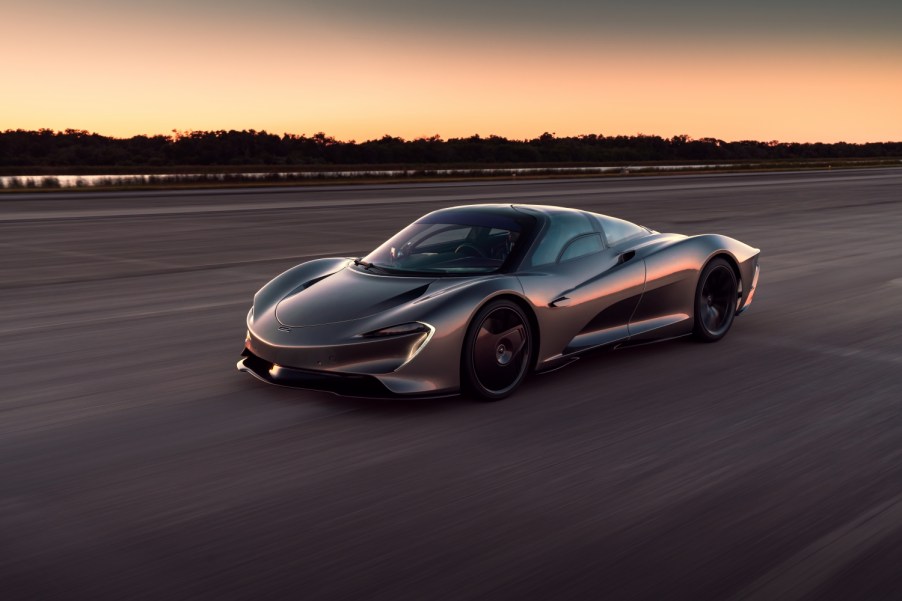
McLaren Speedtail Owner Crashes Brand-New Hypercar on Track
Deliveries of the McLaren Speedtail have begun to ramp up globally. One owner recently attended a McLaren event at Japan’s Fuji Speedway to take their new hypercar on track. Sadly, this is where things took a turn straight into a metal barrier. The limited-edition McLaren smashed head-first, leaking fluids across the asphalt. According to Motor1, a damp track surface and cold tires are likely to blame.
What is a McLaren Speedtail?

To understand exactly why this crash is so heartbreaking, we first need to know why the McLaren Speedtail is so special. For starters, the Speedtail looks like nothing else McLaren currently makes. That is as a result of its long-tail style design. Typically, McLaren’s LT models are track-focused versions of regular supercars. The Speedtail, however, differs by having the singular focus of straight-line speed. As a result, the Speedtail’s design is largely shaped to cope with the aerodynamic forces experienced during top-speed runs. This is what allows the hypercar to reach a top speed of 250 mph.
The special-edition hypercar counts on a 4.0-liter twin-turbo V8 engine developing over 1,000 hp to reach those crazy speeds. However, all of that power is sent exclusively to the rear wheels via a dual-clutch automatic transmission. While these performance figures allow it to reach 60 mph in around 2.5 seconds, it certainly is a handful to manage, especially on cold tires.
The Speedtail is more than just raw power as well. Much like the McLaren F1 of the 1990s, the Speedtial has a central driving position with one center seat flanked by two smaller seats. The result is that unlike most hypercars, the Speedtail sits three. Additionally, the side view mirrors are gone in exchange for cameras that recede into the body to reduce drag. McLaren claims it will only produce 106 of these hypercars at a price of over $2 million each.
The McLaren Speedtail met the wall at Japan’s Fuji Speedway
Back to the crash. An Instagram account called only.speedtail aims to document all of the McLaren Speedtails delivered and has exclusive images and video of the crash. For starters, we see the Speedtail on track next to McLaren’s other hypercar, the Senna. From there, we see a video that shows the infamous hypercar leaving the pits and onto the wet track. While there is no video of the crash, the photo of the aftermath says quite a bit.
For example, we can see that the front bumper is quite mangled, indicating a head-on collision. If we account for the cold tires and wet track, the likelihood is that the owner got on the power a bit too soon, causing the rear end to slide; from there, it’s a quick trip into the barrier. Thankfully, the Speedtail’s overall structure seems unharmed, although we cannot see the carbon tub’s front from the photo.
Lastly, the crash photo seems to show what looks like coolant leaking from the front end. This is likely because the impact crushed one of the McLaren’s front-mounted radiators.
What happens to the crashed hypercar now?

Unlike a normal car, you can’t just send your hypercar to a body shop to get fixed. The McLaren Speedtail will more than likely head back to the factory to get repaired. There are two main reasons why McLaren will be the one to conduct the restoration. Firstly, they are the only technicians in the world that understand the Speedtail and exactly how it is built. Secondly, McLaren can likely restore the hypercar to its original condition, showing no signs of a crash. Not only does this preserve the car’s claimed performance, but it also should help its value hold steady. Regardless of where this Speedtail goes now, it likely won’t be back for quite some time.


